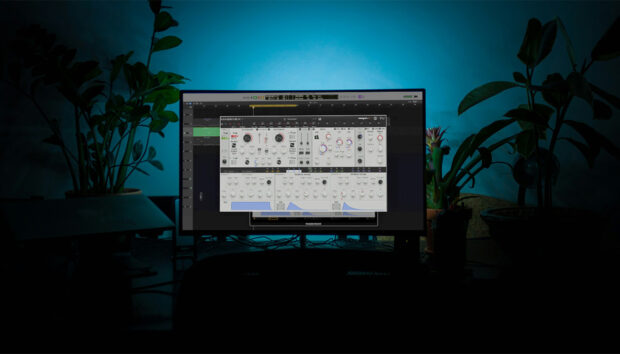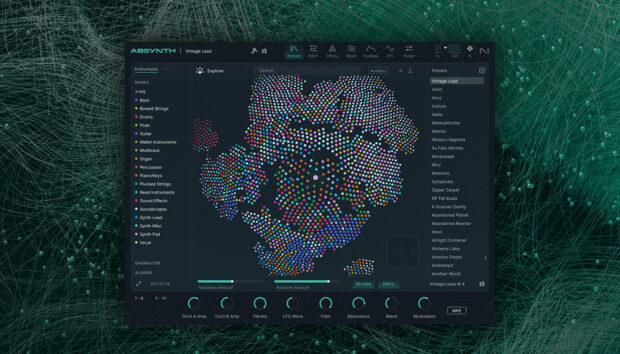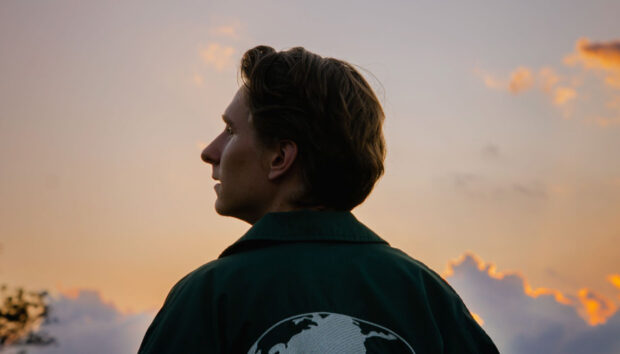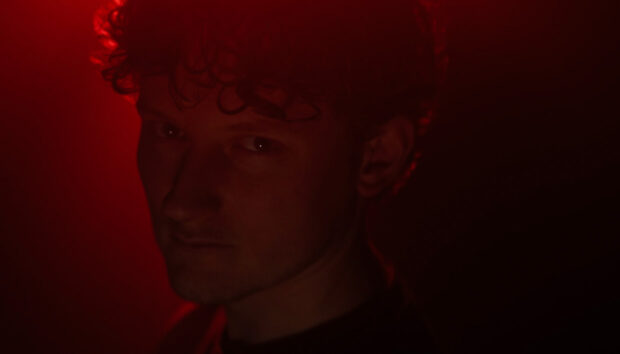Ben Frost’s music defies easy categorization, but over the past 15 years, he’s developed a unique sound that juxtaposes elements of classical minimalism, experimental electronics, and metal. Alongside several full length releases, he’s produced soundtracks for TV and film, recorded sound for installations and documentaries with photographer Richard Mosse, and directed an opera based on Iain Banks’ The Wasp Factory. His musical collaborations include work with Tim Hecker, Swans, and Colin Stetson.
Frost’s latest album The Centre Cannot Hold was recorded with Chicago engineer Steve Albini, famed for his work with Nirvana, The Pixies, PJ Harvey, and many others. The process was a notable departure from that of Frost’s previous releases in that he acted primarily as a performer, entrusting another person to capture the results. Each track was performed via a laptop hooked up to an array of guitar amplifiers and studio monitors, and recorded direct to tape.
Your latest album was created in a very different way to some of your earlier work. What prompted the change?
I am part of that first generation of consumer audio interface users. It’s something we don’t give a lot of weight to, but that was a formative moment in the history of music. Suddenly, for a reasonable price, you could record straight into a computer – this bought us all time. But it also allowed all those previously well-defined lines – between engineer and musician, between the technical and the compositional – to become relaxed and blurred.
That is the most exciting thing about bedroom recording. Working at any time of the day, and on anything you want to work on – it’s all become one instinctive process. That’s where most of my work has come from.
But the power of the undo button, and the power to intricately and endlessly tweak, shifting between performance, recording, mix engineering, is also a new dilemma. It’s something I had to deal with head-on by booking time in a studio – limited time – and dislocating some of that process. It was about questioning some of my practices, going, “I always do it this way – what if I don’t?”
Would you recommend that way of working to other electronic musicians?
Recording to tape forces you to work fast and commit to ideas, within finite limits. It was a really healthy difference for me. It’s not within everyone’s grasp to hire an engineer, of course, but you can always self-impose a similar approach – there are loads of small format tape machines and 4-tracks out there, and they’re not expensive.
You’ve said previously that the creation of the sounds themselves on this album happened very much “in the box”. Can you explain your approach to designing some of those sounds?
With The Centre Cannot Hold, I tried as much as I could, for as long as I could, to build instruments – to build objects – resisting the urge to connect them to a narrative; they were these cellular structures that then had the potential to become music. Just gargantuan patches of bullshit, really – 30, 40, 50 layers of VSTs. Once I worked out that I could load three instances of FM8 into a single Ableton rack and have them all interact with one another, that was the death of my CPU, but the beginning of new music.
What’s thrilling about FM synthesis is the unpredictability of it. You can line up something that sounds great, and then you touch one little dial and everything around it completely changes – it has this kind of liquid, butterfly effect built into it. And when you have a lot of layers, that effect is magnified – each instance can be cross-pollinated by things like sidechain compression and very EQ-specific triggering and gating and so on. And then when you add LFOs on top of that, the relationships between each synth are constantly changing.
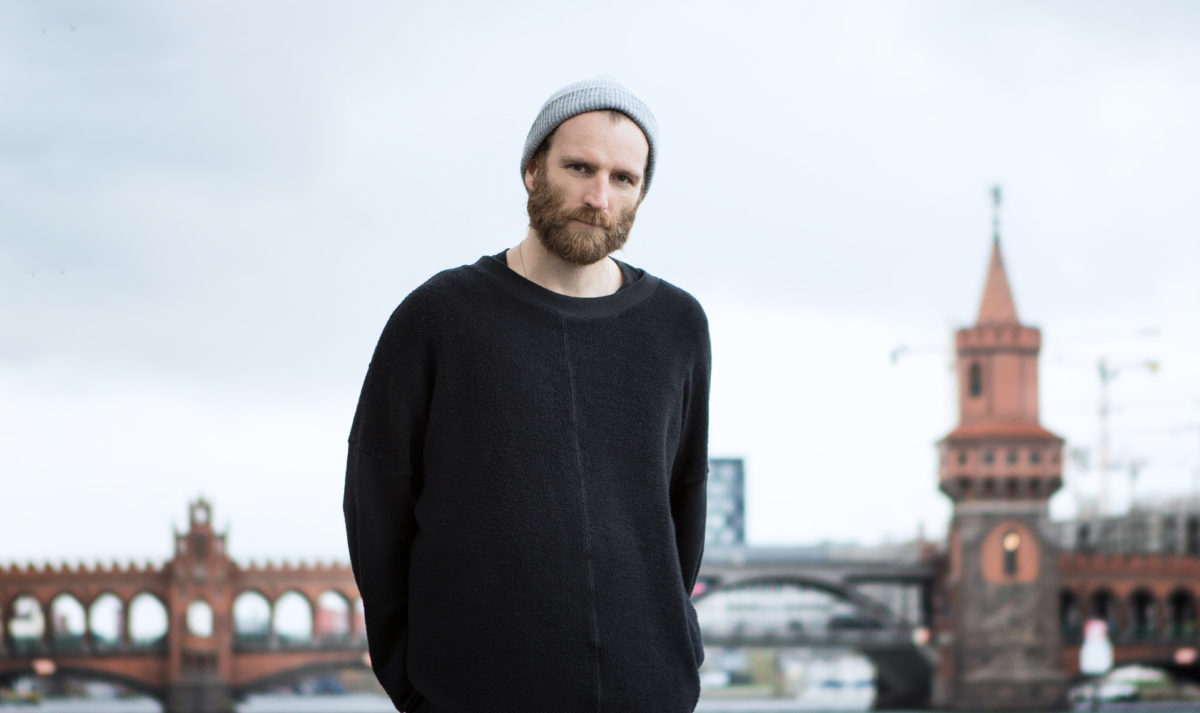
Do you strive for a degree of unpredictability?
The connectivity is where things get interesting to me – when things start to have an effect on other elements that, in a way, are maybe unnecessary and often problematic, but inject chaos into a performance. Obviously, you can have binary relationships, like a kick drum that’s just pounding down in time on some kind of synth, but it wont sound particularly unusual. If you start connecting it in a different way though, so that all the wet and dry times are changing, that thresholds aren’t stuck, the start and end positions within the sample are changing, the pitch is shifting ever so slightly… things become strangely animated.
It is just an attempt at making an instrument that has a life of its own. If I hold my finger down on a note, I’m aiming at the possibility of hearing a new variation in that 20 minutes later.
I suppose reamplifying has a similar effect – a loud guitar amplifier adds a certain amount of non-linearity to the system.
Early in the process of making the record, I got into a YouTube spiral. I was interested in this idea of endurance, and started watching footage of the last couple of minutes of marathons from over the years. How I got there is a long story, but suffice to say, some of the footage is fucking fascinating. You’re watching people whose bodies have literally shut down. Their minds are still focused on winning, but they’re literally crawling to the finish line because their legs have just given out.
You don’t even need the context of it; there’s just something about the struggle that fires this thing in your brain that says, “Watch this, listen to this.” I think we’re keyed in to focus on the strain, on the effort. Nobody wants to watch a marathon and see a guy winning it without breaking a sweat.
I find that it is like that with music too. With acoustic music – or electric music played through valve amplifiers – things tend to sound the best when they’re working the hardest. A small amp running at nine will almost always sound better than a huge amp running at two. I think that’s something that’s still lacking from the digital realm.
Do you think some of that struggle can be captured without leaving the computer?
You can distort outputs, of course, but digital distortion has a way of sounding bad, and not usually in an interesting way. I wish there was a way you could starve your computer, you know? I actually explored this for a little while, and it turns out it just doesn’t work like that. Computers either have enough power, or they turn off. Sometimes when the battery is running low and the CPU’s crapping out, it can output something interesting for a second. Most of the time, though, it just stops.
Whenever somebody gives me a plug-in, my first thought is, “How can I break this?” I find the point where it’s unhappy, and there’s usually something interesting in there – a way to turn the technology against itself. SPL makes a plug called De-Verb, for example, which is designed to remove reverb. So that’s great, let’s remove all the reverb. But they also made this thing called Mo-Verb, which is designed to give more room to a sound. Where things get interesting is when you start stacking those one after the other, on top of each other – one fighting to find a room, the other fighting to tear it out. What happens? What’s it going to do when it has nothing to grab onto?
Do you tend to let these kinds of questions guide you towards new sounds, or do you start out with a specific result in mind?
Many of my references are not musical but visual. They’re not so much about chasing a musical idea as they are about realising some kind of sonified image.
A few years ago, I made a record called By the Throat. The main sound element in the first track is all about a series of aggressive compression relationships. It’s a balance between huge, kind-of sucking shapes and a sort of aural displacement. The way that came about was actually inspired by high-speed footage of great white sharks launching out of the water at seals. The most crazy part of it was when the shark would fall back into the sea; you’d get this moment where the water momentarily defies gravity and leaves a physical hole in the ocean surface. It then rushes back in to fill the space, and the liquid becomes almost like a solid for a moment – it seems to thicken in a way.
I remember pulling that up on YouTube and looping it back up to use as a basis for the beginnings of a piece of music – trying to emulate it sonically. And I’ve used that technique a lot since – building around a looping image. One of the very first sounds on the new record is a kind of a bass instrument with a mid-to-upper-range flicker, this sort of ripple. Again, that was inspired by high-speed footage from a wildlife documentary, but this time it was a cheetah.
When these things run, they actually leave the ground to the extent that they spend more time in the air – they’re flying. Filmed in high speed, you can see their spines flex and there’s a sort of muscular ripple. It’s bizarre to watch slowed down, this whole mechanism of interconnected bone and sinew which undulates together. The overall shape seems effortless, but the way it’s constructed involves so many moving parts.
Even prior to The Centre Cannot Hold, you’ve worked extensively with other musicians and producers. Given that it’s now possible for one person to create a whole album with little more than a laptop, do you think collaboration is something that electronic musicians should actively look to embrace?
To some extent, isolation is inherent to creating electronic music. It always seems to come down to a single mouse pad, and we all ultimately end up working alone. So many of our tools are designed to make it possible to exist without the need for other people, at least on a technical level. There’s power in that, but there’s also the risk of monotony. There is power in collaboration – in interfacing with other opinions and other ways of working and reacting.
I was talking to a friend the other day, a game developer, and he was telling me about this thing where people from around the world get together in a room and build a game from scratch. There’s literally a programmer from Poland, an illustrator from Canada, a 3D renderer from Peru… wherever. They’re literally getting on planes and coming together to this one place for 48 hours, because all of that energy gets focussed into a single time and space. If that works for developers, it can work for electronic musicians.
I also think there’s still a lot to be said for rock paradigms in music creation: Smelly, dank rehearsal rooms with practice amps; dudes smoking out the front and talking to one another; metal band in one room, reggae band in the next; weird interactions in the hallway… People still put up those posters in our remaining record stores, like, “Bass player wanted,” or, “Guitar player available.”
That’s a very brave thing to do in this day and age, and as electronic musicians, we could probably all learn something from it. Those signs always fill me with a lot of joy.
photo credits: Yvonne Hartmann










